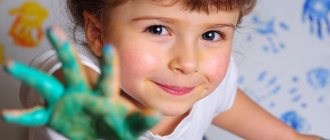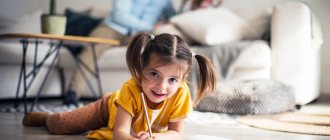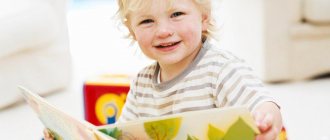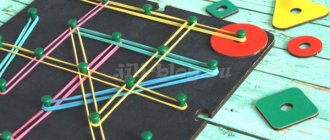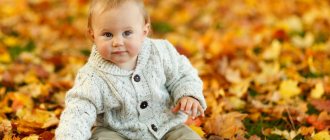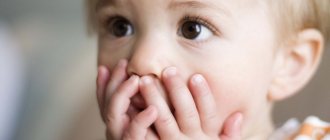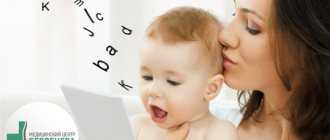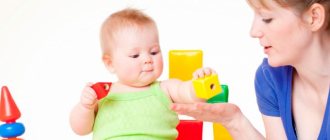Features of development of children 3 years old (“Munich diagnostics”)
On the one hand, three-year-old children are constantly working motors. They cannot sit still for a long time and quickly change one type of activity to another, since attention at this age is not yet sufficiently developed. On the other hand, 3-year-old children can safely be called conservatives: they like rules, they quickly get used to the daily routine, and preferences in food and games appear. This craving for constancy is explained by the work of basic personality mechanisms that are aimed at ensuring security. What is familiar and predictable to a child causes less fear than what is new and unknown. This age is also notable for the fact that the baby becomes more independent, can defend his interests, stubbornness and whims appear.
To qualitatively assess the psychomotor, speech and communication skills of children, the “Munich Functional Developmental Diagnostics” was created in 1997 in Munich. According to it, at 3 years old a child should be able to do the following:
- Go up and down stairs;
- Jump on one and two legs;
- Catch and kick the ball;
- Do different movements at the same time (for example, shaking your head and clapping your hands);
- Step over obstacles;
- tear paper;
- Sort objects by color, size, shape;
- Build towers from cubes;
- Play games with simple rules;
- Name your gender;
- Orientate yourself in space.
At the age of 3 years, children experience a big leap in physical development. The baby can already run quickly, jump, squat, and turn his body. His movements become more precise and coordinated, and his reaction speed increases. Orientation in space also improves significantly (it is often better developed in boys than in girls of this age).
Methods of teaching preschoolers to read
Warehouse reading
The method of teaching a child to read through warehouses was actually used back in Rus', but for modern parents this technique is associated with the name of the philologist Nikolai Aleksandrovich Zaitsev.
Zaitsev suggests not focusing on learning individual letters, as it can be difficult for students to understand how letters can merge into syllables and words. Teaching a child to read by syllables is also not always easy: one syllable can be quite long (glitter, ruble), and the boundaries of the syllables may not be obvious (Lun-tik or Lun-ntik?). Therefore, in Zaitsev’s methodology, a warehouse is used as the main unit.
The warehouse can be a combination of a consonant and a vowel letter (pa-pa, ma-ma), a separate consonant or vowel (de- d , ya-s-li , A -lyo-sha), as well as a combination of a consonant with a hard or soft sign ( ma- l -chi-k, let's go ).
In order for a preschooler to understand the differences between the recording of voiced and soft, vowel and consonant sounds, different types of frets have their own cube size, color and filling, which makes the cubes sound when shaken. The cubes affect several channels of perception at once, and the sequences need to be sung, not just pronounced - this way, according to the author of the method, learning is more interesting and effective.
One of the advantages of the method is that children willingly play with blocks themselves, and the process of learning to read becomes active and mobile.
Syllable reading
This technique was developed by Nadezhda Sergeevna Zhukova, a Soviet and Russian speech therapist. The basic unit in her system is not a letter, but a syllable. The author of the method suggests moving on to studying letter combinations as soon as the child has mastered the first vowels - a, o, u. When the preschooler has learned to connect two vowels, he can move on to studying consonants.
Thanks to the fact that the concept of a syllable is introduced at an early stage, teaching a child to read syllables together becomes faster and easier. By the way, as in Zaitsev’s method, the syllables are suggested to be sung, and not just pronounced.
Based on the syllabic method, Zhukova developed a set of teaching aids - a primer, copybooks and a reading book. The manuals will help teach children 6 and 7 years old to read correctly at home.
Both techniques for teaching preschoolers to read are used in Skysmart's school readiness course. The course consists of two stages: first, children become familiar with letters and spellings, which allows them to quickly start reading simple words, and then they learn what a syllable is. Gradually we introduce more complex syllable structures and move on to reading phrases and sentences.
Development of fine motor skills in children 3 years old
- Drawing. At 3 years of age, drawing development is at the scribble stage. Despite the fact that the drawings can sometimes turn out to be shapeless, the child puts his own meaning into them. Three-year-olds with well-developed fine motor skills can already draw simple shapes (circle, square, lines). The drawing of a person in 3-year-old children turns out to be primitive, but it already contains a head, body, legs and arms.
- Ability to unfasten zippers and buttons. Although a 3-year-old child still cannot fasten a button or zipper himself, he has already learned how to unfasten them. Encourage your child's desire for independence, because fastening and unfastening various clasps not only perfectly develops fine motor skills, but also stimulates the development of thinking.
A three-year-old child has most hygiene skills. He knows how to wash himself, wash his hands, go to the potty, undress, and tries to eat carefully at the table.
- Toys that require developed finger motor skills. Usually at this age children like to play with small objects; puzzles, construction sets, lacing, and mosaics are used. When giving your child such toys, do not forget about safety precautions and do not leave the child unattended while playing.
- Finger games. Finger gymnastics can be a fun exercise for developing your baby’s fine motor skills. You can find ideas for finger games in the video:
Checking phrasal speech
Two-word sentences (subject + predicate). Show your child how a toy dog runs. If the child himself does not comment on the actions, ask: “What is the dog doing?” The child can answer in monosyllables: “Running.” Then ask: “Who is running?” The child will say: “Dog.” Although he has not constructed a detailed phrase, he has this phrase in his head. Do the same action with other toys. If the child is silent, encourage him to say: “Here is a dog running. And now? (A cat, a bunny is running.)" Using the same toys, depict other actions: "Here is a dog running. And now... (the dog jumps, bites, barks).” Use gestures and onomatopoeia to explain actions. Combine the last two tasks, pushing the child to utter complete phrases: “The dog is barking. The cat meows. The cat is running. The dog is running. The dog is jumping."
Three word sentences (subject + predicate + object). Perform actions whose meaning can only be conveyed by a verb with an object: waving my hand, bathing a doll. Ask: “What am I doing?” If a child uses a verb without an object: “You’re waving,” clarify: “With what?” - “Waving your hand.” Sample sentences . You kiss mom. You wash your hands. You are brushing your teeth. You are petting the cat. You throw the ball. You comb your hair. You are looking for a pen.
Sentences with two subjects or predicates with the conjunction “and” or “a”. Use two toys to perform the same action: “The dog and the cat are running. The dog and cat are eating." The child comments on the actions. A similar task for sentences with listed predicates: “The dog runs and barks. The dog barks and bites." Perform various actions with toys: “The cat runs and the dog sits. The dog barks and the cat meows.”
Sentences with prepositions . Perform actions that can be commented on using prepositions: in, to, by, on, above, under, for, near. Sample sentences . You look out the window. The ball rolls on the floor. You go to the window. You put your pen on the table. The ball rolled under the sofa. You are standing near the table.
Ask leading questions.
Result:
A) The child does not form phrases, uses individual words, and fills in gaps in speech with gestures. Sentences are constructed grammatically incorrectly, prepositions and conjunctions are not used in speech - a severe form of OHP.
It is difficult to construct independent sentences; basically, the child tries to repeat after you. Sentences based on opposition are difficult to come by - an easier form of OHP.
B) The child copes with tasks; sometimes he may confuse prepositions - this is normal.
Development of thinking at 3 years old
The famous psychologist J. Piaget believed that the thinking of three-year-old children is structured in such a way that they cannot look at the situation from the outside. This phenomenon is called egocentrism of thinking. In addition, children at 3 years old are not yet able to fully understand the connections between events or phenomena, so there is little logic and a lot of imagination in the child’s thinking.
It is at this age that a very important transition occurs from visual-effective to visual-figurative thinking. If in early childhood a child learned about the world through actions with objects, feeling them, tasting them, now, on the threshold of preschool age, children usually acquire the ability to act with images of objects that are preserved in their memory. A child of three years old can think about something that is not within sight. This is an extremely important step towards logical thinking.
Methodology for psychological and pedagogical examination of children 4–5 years old
Tatiana Doshchinskaya
Methodology for psychological and pedagogical examination of children 4–5 years old
Methodology for psychological and pedagogical examination of children 4-5 years old
1. Disassembling and folding the nesting doll. The task is aimed at identifying the level of development of practical orientation towards magnitude and learning ability.
Equipment: four-seater (five-seater)
matryoshka
Conducting an examination : the adult gives the child a four-seater (five-seater)
matryoshka and asks to open it and look at other nesting dolls.
Then he offers to collect all the nesting dolls into one. If there is any difficulty, the adult takes the matryoshka doll and asks the child to watch how he does it: “First I take the small doll and look for a little smaller one, then I pick up a handkerchief for it, etc.” An adult demonstrates folding a nesting doll using the trial method , attracting the child’s attention to searching for the next part.
After training, the child is asked to complete the task independently. Assessment of the child’s actions: acceptance and understanding of the conditions of the task, methods of implementation, learning ability, attitude towards the result of one’s activities.
2. Dismantling and folding of the pyramid. The task is aimed at the child’s ability to distract from color and highlight quantity as the main principle of action, practical orientation to quantity.
Equipment: pyramid of four (six)
rings, rings of different sizes, different colors.
Conducting an examination : an adult invites the child to disassemble the pyramid. If the child does not act, the adult begins to disassemble it himself and involves the child in this action. In cases of difficulty, an adult shows how to select rings by size: “You need to take a big ring every time.”
. Then he shows how to apply one ring to another to see the difference in their size. After training, the child is asked to complete the task independently.
Assessing the child’s actions: acceptance and understanding of the conditions of the task, methods of execution, learning ability, attitude to the result.
3. Box of forms ( “mailbox”
). The task is aimed at checking the level of development of practical orientation towards form and learning ability.
Equipment: “mailbox”
– a plastic or wooden box with four
(five)
slots of different shapes; eight three-dimensional geometric shapes corresponding to the slots of the box.
Conducting an examination : an adult places a box in front of the child, paying attention to the slots, and lays out three-dimensional figures next to it so that the base of each figure, corresponding to the shape of the slot, is at the top. The child is asked to place all the figures into their slots, i.e., determine which slot this or that shape fits into. In case of difficulty, the adult asks the child to try on the figurine to the slot, turning it the right way, and shows how it should be done.
Assessing the child’s actions: see previous method .
4. Cut picture. The task is aimed at identifying the level of development of holistic perception of an object picture.
Equipment: two identical subject pictures, one of them cut into three (four)
parts diagonally.
Conducting an examination : an adult shows the child three (four)
parts of the cut picture and asks to put the whole picture together:
“Make a whole picture
.
Training: an adult shows how to connect the parts into a whole. After this, he again invites the child to complete the task independently.
Assessing the child’s actions: see previous method .
5. Colored cubes. The task is aimed at identifying the level of development of color perception (highlighting by word, color name)
.
Equipment: colored cubes of five (seven)
colors: 2 red, 2 yellow, 2 green, 2 blue, 2 white
(blue and pink)
.
Conducting an examination : colored cubes are placed in front of the child and asked to show a cube of a certain color: “Show me where the red one is...”
.
Then they ask you to name the colors of all the cubes. If the child does not identify the color according to the word, training is carried out. The child is asked to show a cube similar to the one in an adult’s hand, i.e. the level of comparison is clarified. Then they are taught to correlate the color of the cube with the name word, repeating the color 2-3 times: “Show me where yellow is, here is yellow.
Find where the yellow one is .
Assessment of the child’s actions: acceptance of the task, the level of color perception is noted (comparison, recognition of color by word, purpose, learning ability, attitude to the result.
6. Take out the key.
For children 4 years of age . The task is aimed at identifying the level of development of visual and effective thinking.
Equipment: wind-up toy, key.
Conducting an examination : a child is given a wind-up toy, and the key to it hangs so high that the child, standing on the floor, cannot reach it. The task is for the child to guess to use a chair (large and small chairs are located not far from him)
. No training is provided.
Assessment of the child’s actions: acceptance and understanding of the conditions of the task, methods of execution (whether he immediately guessed to take a large chair, whether there was an attempt to use a small chair or immediately refused to complete the task, attitude to the result.
For children 5 years of age . The task is aimed at identifying the level of development of visual-figurative thinking.
Equipment: plot picture depicting the situation: a boy is standing in the room, he has a typewriter in his hands, he is looking at the key that hangs on the wall, on a nail. Not far from the boy there are two chairs - a large one and a small one.
Conducting an examination : an adult invites the child to look at the picture, then says: “The boy wants to envy the car with a key, but does not know how to get it. Tell the boy how to get the key."
Assessing the child’s actions: accepting and understanding the conditions of the task, solving the problem in a visual and effective way, whether there are attempts to solve the problem in an effective way.
7. Account. The task is aimed at identifying quantitative ideas in the child.
Equipment: 15 flat sticks.
Carrying out the examination :
for children 4 years of age : 10 sticks are placed in front of the child and asked to take one, and then many. Training is carried out by imitation;
for children of the 5th year of life : counting sticks are placed in front of the child and asked to take two, one, three. Then the adult puts one stick on his palm, in front of the child, takes another stick and puts it on his palm, covering it with the other palm. The child is asked: “How much is there?”
Then they put another stick in the same palm and ask again:
“How many is there?”
, i.e., they check counting representations within three. In case of difficulties, training is provided. If the child cannot cope with choosing a certain number according to the word, then they offer a choice - one, two, three according to imitation.
Assessing the child’s actions: accepting and understanding the task, choosing from a variety of one, two, three by word, by imitation, the ability to perform counting operations by representation.
8. Design. The task is aimed at identifying the child’s ability to create structures from four (five)
elements according to the model, learning ability.
Equipment: 10 flat sticks of the same color.
Conducting an examination : an adult builds a figurine from flat sticks behind the screen. Then he shows the building and asks the child to build the same one. If there are difficulties, the child is asked to build according to the demonstration.
Assessment of the child’s actions: acceptance and understanding of the task, ability to work according to a model, learning ability, attitude to the result.
9. Drawing (house, tree, person)
. The task is aimed at identifying the level of development of the subject drawing, behavior in a certain situation, and the purposefulness of the activity.
Equipment: colored markers, pencils and paper.
Conducting an examination : the child is given paper and asked to draw one object first - a house. After this, they are asked to draw a person, and then a tree. No training is provided.
Assessment of the child’s actions: acceptance and understanding of the task, analysis of drawings: sketching, prerequisites for an object drawing, object drawing, leading hand, coordination of actions of both hands.
10. Game. The child’s interest in toys, the nature of the use of toys, the nature of the game (manipulation, procedural actions or plot elements)
.
Equipment: play area with a doll, strollers, sets of clothes and dishes for the doll, a car, cubes, soldiers, gates, a ball, a basin of water, small toys, “bi-ba-bo”
.
Conducting an examination : an adult invites the child to a play corner and emotionally involves him in joint actions with toys. First, you are asked to feed the doll. Then roll her in the stroller, then put her to bed. If the child does not want to play with the doll, he is asked to load the blocks into the machine and take part in the construction. An adult builds a road out of bricks, and then puts a small doll in the car and asks the child to drive it along the path. In case of refusal, the child is offered to play near a basin of water: one small toy (balls, fish, etc.) is dropped into it, then they are offered to catch them with a net.
Assessment of the child’s actions: attitude towards toys, interest and nature of actions with toys, selectivity in toys.
Can three-year-olds be attentive?
The ability to concentrate in 3-year-old children is low, which is why they quickly switch from one thing to another. If you force your baby to do the same thing for a long time, that is, more than 10 minutes, the nervous system will be overloaded (an external sign of which is hysterics). The attention of 3-year-old children is selective; they pay attention only to what is attractive to them.
When working with your child at home, pay attention to the baby’s condition. At this age, children get tired quickly. Therefore, all classes should be held in a relaxed playful manner. To see how you can interest a child, watch the video.
We check compliance with the word pattern.
Ask your child to repeat after you words of 1-3 syllables.
Example words : chair, table, scarf, thunder, elephant, eyebrow, leaf, hail, snow, plaid, maple, food, cake, wolf, elevator, bread, hand, face, rose, fox, sea, grove, saw, sky , dew, goat, forest, axe, lawn, fence, spout, sand, skein, plant, scoop, sandpiper, bag, chest of drawers, bag, pattern, car, milk, knee, cabin, wheel, crown, feather bed, magpie, head , gate, town, bun, hammer, nightingale, fly agaric, pedestrian, samovar, leash, kitten, headband, scooter.
Assess whether the child follows the sequence of sounds and syllables. Use words that the child pronounces inaccurately or not always accurately. Avoid words that are overloaded with consonant clusters, when 2-3 consonant sounds come in a row (for example, pillar, potato). Let the child repeat several unfamiliar words of 2-3 open syllables: mine, viburnum.
If you had to teach your child the pronunciation of such words, check if he can repeat them after some time. Do not offer words with sounds that the child cannot pronounce or misses. All sounds must be pronounced somehow, albeit distorted.
Result:
a) The child confuses the order of syllables in familiar words; the same word can be pronounced differently. Sometimes the word is distorted beyond recognition. New words are remembered with great difficulty, learned words are quickly forgotten - there is ONR
b) The picture of the words is not damaged or is slightly damaged. A child sometimes swallows one of the sounds in familiar words: table - “tol”, scarf - “shaf”. This is not a system, but concerns some words. The child may confuse the order of syllables in unfamiliar words. If you learn a word with him, he is able to repeat it correctly after some time - the norm.
Development of memory and imagination in children 3 years old
Children of this age have the best developed emotional memory. A 3-year-old child remembers well what evokes vivid emotions and impressions in him. It's no secret that preschool children have very developed imaginations. Most of the time, three-year-old children are in the world of their fantasies. However, this also has a negative side; children can be very impressionable, which is why many fears arise that are characteristic of preschool age (fear of the dark, dogs, thunderstorms, etc.).
Mental development of children at 3 years old
By the age of 3, children usually have many new skills and abilities in the field of mental abilities. A three-year-old child should be able to:
- Compare and sort objects by size, length, shape, color;
- Find the same object;
- Compose puzzles from 4 parts;
- Name primary colors and shades;
- Know poems and songs;
- Make up a story based on a familiar picture with the help of an adult;
- Know the names of some trees, dishes, furniture, animals, clothes, transport, vegetables and fruits;
- Know basic geometric shapes;
- Tell him what he did during the day.
We check vocabulary.
Verbs. Perform clear actions and ask your child to name them. For example, you jump and ask, “What am I doing?”
Ask what certain objects do. For example, “What does the machine do?” - “He’s going.” - “What is the bird doing?” - “Flying.”
Nouns. Show your child an object or a picture with its image and ask “what is this?”
Sample words.
Body parts : eyebrows, cheeks, neck, head, stomach.
Clothes : underpants, socks, jacket, shirt, T-shirt, fur coat, hat, scarf, pants, trousers.
Plants : tree, flower, bush, rose, chamomile, dandelion, burdock, nettle.
Animals : dog, cat, hare, bear.
Baby animals : kitten, puppy, fox cub, wolf cub, tiger cub, elephant calf, frog.
Adjectives . Show your child an object and ask him to name its color. He must know the primary colors: black, white, red, green, blue, yellow, brown.
Ask to name the sizes of objects: large - small, long - short, narrow - wide, high - low.
Prepositions. Check the use of prepositions: in, on, above, under, behind, near. Place an object under the table and ask where the object is. For example, “Where is the pen?” - "Under the table". - "At the table". - "On the table".
Result:
a) The child does not know most words, does not speak adjectives and prepositions, uses the simplest nouns and several verbs in speech, including incorrectly. The child mixes words that are close in meaning: go - run, sofa - chair - severe form of OHP
The child has a poor vocabulary. He confuses the meanings of adjectives and prepositions - a milder form of OHP.
b) The child generally copes with the tasks and uses all the tested parts of speech. Ignorance of certain words is acceptable - the norm.
Speech development in three-year-old children
The speech of 3-year-old children is actively developing, kids develop an interest in language, they love to chat and talk about everything they see. Here are the main directions of speech development of three-year-old children.
- Enrichment of vocabulary;
- Phrasal speech;
- Ability to conduct dialogue (the child knows how to ask and answer questions);
- The appearance of polite words.
The speech itself of a three-year-old is far from perfect. Babies at this age usually have difficulty pronouncing hissing and sonorant sounds. At 3 years old, children often spell sentences incorrectly, confuse words, and miss words.
Communication skills
If your child used to play alone, now the company of his peers is important to him. Children at 3 years old are usually very sociable and outgoing. According to the classification of M.I. Lisina for this age is characterized by an extra-situational-cognitive form of communication. This means that communication most often occurs against the backdrop of joint activities to get to know the world. At the same time, it is very important for a 3-year-old child to feel approval and sympathy from loved ones.
conclusions
By the age of 3, a child develops many new skills and abilities. The baby becomes more and more independent, he gradually learns to take care of himself. A three-year-old child controls his body quite well; he can maintain balance, run, jump, and play ball. The baby’s cognitive abilities also improve: thinking becomes imaginative, memory, attention, speech, and imagination develop. Communication with people reaches a new level, children become interested in communicating with peers.

